- Understanding the Characteristics of Celery Root
- 1. Appearance
- 2. Texture
- 3. Flavor
- 4. Nutritional Value
- 5. Cooking Methods
- 6. Pairings
- 7. Seasonality
- 8. Storage
- 9. Varieties
- Identifying the Signs of Fresh Celery Root
- 1. Firmness
- 2. Weight
- 3. Color
- 4. Smell
- 5. Leaves
- 6. Shape
- 7. Storage Conditions
- Selecting the Perfect Celery Root for Your Dish
- 1. Appearance
- 2. Size
- 3. Weight
- 4. Aroma
- 5. Storage
- Exploring Different Sizes and Shapes of Celery Root
- Various Sizes:
- Different Shapes:
- Tips for Storing Celery Root to Maintain Freshness
- 1. Harvesting Fresh Celery Root
- 2. Removing the Greens
- 3. Cleaning and Drying
- 4. Proper Storage Containers
- 5. Temperature and Humidity
- 6. Checking and Rotating
- 7. Storage Duration
- Enhancing Flavor with Seasonal Varieties of Celery Root
- Winter Celery Root
- Spring Celery Root
- Summer Celery Root
- Fall Celery Root
- Unveiling the Nutritional Benefits of Celery Root
- 1. Rich in Fiber
- 2. High in Vitamin C
- 3. Potassium-Rich
- 4. Contains Phosphorus
- 5. Good Source of Vitamin K and B Vitamins
- 6. Supports Hydration
- 7. Antioxidant Properties
- Culinary Uses and Recipes Featuring Celery Root
- 1. Mashed Celery Root
- 2. Roasted Celery Root Soup
- 3. Celery Root Remoulade
- 4. Celery Root and Apple Slaw
- 5. Celery Root Fries
- 6. Celery Root and Potato Gratin
- 7. Celery Root and Mushroom Risotto
- “Question-Answer”
- What is celery root?
- How do you pick the best celery root?
- Can celery root be eaten raw?
- What are some ways to cook celery root?
- What are the health benefits of celery root?
- Is celery root the same as celery?
- “Video” What’s the Deal With Celery Root, AKA: Celeriac?
Celery root, also known as celeriac, is a vegetable that often goes unnoticed in the produce aisle. Its knobby appearance and earthy aroma may deter some, but those who take the time to discover its subtleties are in for a culinary treat. Picking the perfect celery root requires a discerning eye, as there are several factors to consider before making a selection.
One of the first things to look for when picking celery root is its size. While larger roots may be more visually appealing, they tend to have a stronger flavor and a tougher texture. Smaller roots, on the other hand, are often more tender and have a milder taste. It’s important to choose a size that suits your intended use, whether it be for a hearty soup or a delicate salad.
Another important characteristic to consider is the firmness of the celery root. A good celery root should feel heavy for its size and have a firm texture when squeezed. Avoid roots that feel soft or spongy, as this may indicate that they are past their prime. A firm celery root will be easier to peel and will hold its shape better when cooked.
In addition to size and texture, the color of the celery root can also provide clues about its freshness. Look for roots that have a pale, creamy color, as this indicates that they are younger and less fibrous. Avoid roots that have a yellow or brown tint, as this may be a sign of age and bitterness. The fresher the celery root, the more delicate and mild its flavor will be.
Picking celery root may require a bit of patience and a keen eye, but the effort is well worth it. Once you’ve selected the perfect root, you can peel, dice, roast, or puree it to create a wide range of delicious dishes. The subtle, nutty flavor of celery root is a versatile addition to any kitchen, and its unique texture adds depth to soups, stews, and side dishes. So next time you find yourself in the produce aisle, take a moment to appreciate the art of picking celery root and unlock its hidden delights.
“The subtle, nutty flavor of celery root is a versatile addition to any kitchen, and its unique texture adds depth to soups, stews, and side dishes.”
Understanding the Characteristics of Celery Root
When it comes to cooking with celery root, it’s important to understand its characteristics in order to achieve the best results. Here are some key things to know about celery root:
1. Appearance
Celery root, also known as celeriac, is a root vegetable that is brown in color and has a knobby, uneven outer skin. It is often covered in dirt and should be thoroughly cleaned before cooking.
2. Texture
The texture of celery root is dense and firm, with a slightly fibrous inner flesh. When cooked, it becomes soft and tender, making it ideal for soups, stews, and purees.
3. Flavor
Celery root has a mild, earthy flavor that is reminiscent of celery and parsley. It is slightly sweet with a hint of nuttiness. The flavor intensifies when cooked, making it a versatile ingredient for various dishes.
4. Nutritional Value
Celery root is low in calories and contains several essential nutrients, including vitamin C, potassium, and dietary fiber. It is also a good source of antioxidants and can support digestive health.
5. Cooking Methods
Celery root can be cooked in various ways, including boiling, roasting, steaming, and sautéing. It can be used as a flavor enhancer in soups and stocks, or as a main ingredient in salads, gratins, and casseroles.
6. Pairings
Celery root pairs well with other root vegetables such as carrots, potatoes, and parsnips. It also complements flavors like garlic, thyme, rosemary, and lemon. Additionally, it can be combined with dairy products like cream and cheese to create rich and creamy dishes.
7. Seasonality
Celery root is in season during the fall and winter months. It is harvested when mature, which is typically between September and April.
8. Storage
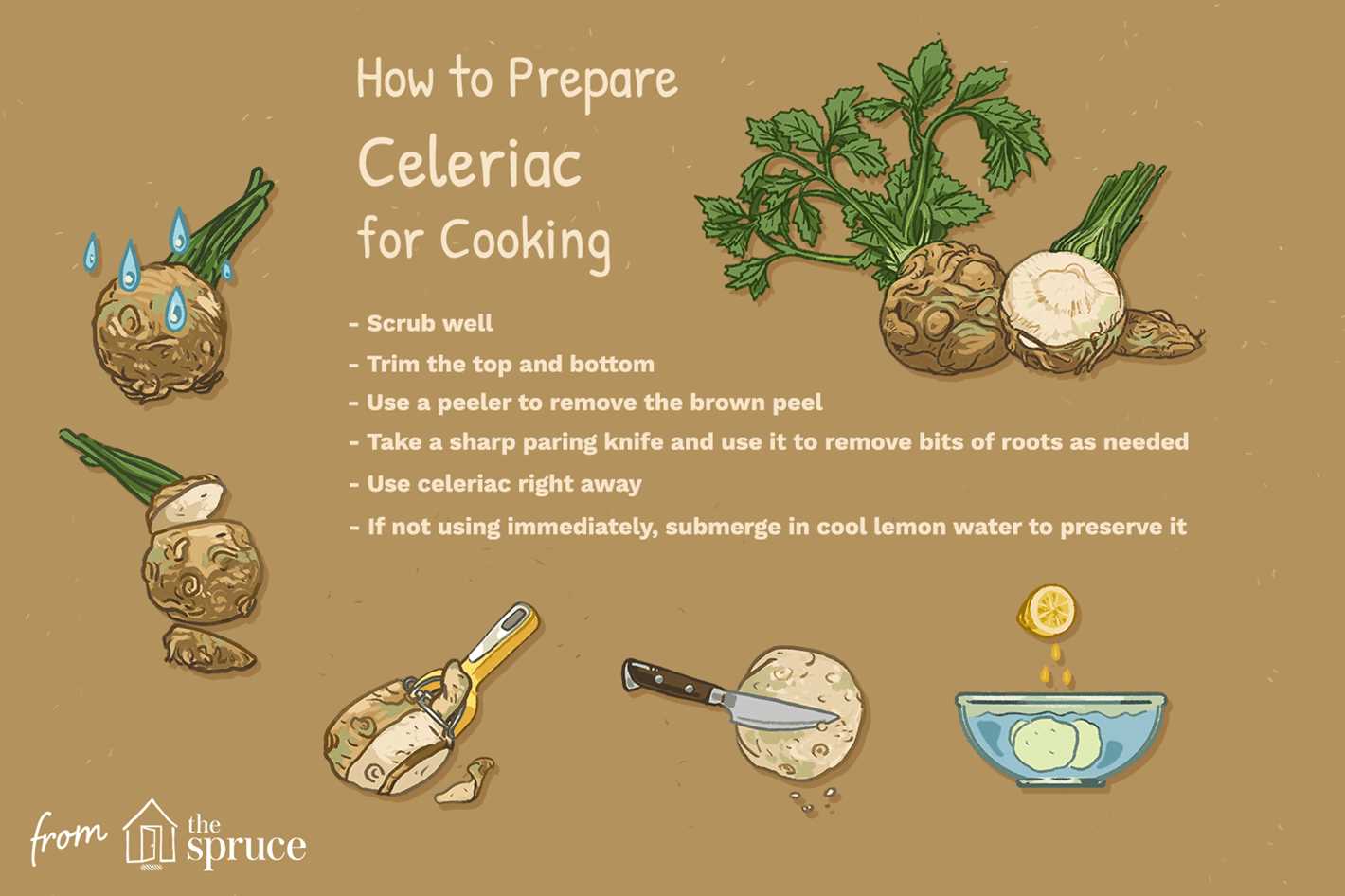
Celery root can be stored in a cool, dark place for several weeks. Ensure that it is kept in a well-ventilated area and away from other produce, as it releases ethylene gas which can cause spoilage in surrounding fruits and vegetables.
9. Varieties
There are several varieties of celery root, each with its own unique characteristics. Some popular varieties include Prinz, Ibis, Brilliant, and Mars.
Understanding the characteristics of celery root is the key to unlocking its full potential in the kitchen. Experiment with different cooking methods and flavor combinations to discover new and exciting ways to incorporate this versatile vegetable into your meals.
Identifying the Signs of Fresh Celery Root
When it comes to selecting celery root for your recipes, it’s essential to know the signs of freshness. Here are some indicators to look for:
1. Firmness
Fresh celery root should feel firm and solid to the touch. Avoid any roots that are soft, mushy, or have visible spots of decay.
2. Weight
A heavier celery root indicates a higher water content and freshness. Pick up a few roots and compare their weights to determine the best options.
3. Color
Look for celery roots with a pale or creamy white color. Avoid those with discolored patches, as they may indicate spoilage.
4. Smell
Fresh celery root should have a mild, earthy aroma. If you notice a strong or unpleasant smell, it could be a sign of decay or improper storage.
5. Leaves
If the celery root still has its leaves attached, they should be crisp and green. Wilted or yellowing leaves may suggest that the root is no longer fresh.
6. Shape
Choose celery roots that are relatively round and symmetrical in shape. Irregular or misshapen roots may have been damaged or aged.
7. Storage Conditions
Check the area where the celery roots are stored. They should be kept in a cool, dry environment to maintain their freshness. Avoid roots that are stored in areas with excessive moisture or temperature fluctuations.
By keeping these signs of freshness in mind, you’ll be able to select the best celery root for your culinary creations, ensuring the most delicious and flavorful results.
Selecting the Perfect Celery Root for Your Dish
When it comes to selecting celery root for your dish, it’s important to choose the perfect one that will enhance the flavors and textures of your meal. Here are some tips to help you select the best celery root:
1. Appearance
Start by looking for celery roots that are firm, with a smooth and unblemished skin. Avoid any celery root that has soft spots or discoloration, as these are signs of spoilage.
2. Size
The size of the celery root you choose will depend on your recipe. Generally, smaller celery roots tend to have a more intense flavor, while larger ones are milder. Consider the flavor profile you’re aiming for and pick accordingly.
3. Weight
Take the celery root in your hand and feel its weight. A good celery root should feel heavy for its size, indicating that it’s filled with moisture and will have a crisp texture.
4. Aroma
Give the celery root a sniff to check for a fresh and mild aroma. Avoid any celery root with a strong or unpleasant smell, as this may indicate that it’s gone bad.
5. Storage
Once you’ve selected the perfect celery root, store it in the refrigerator in a plastic bag to keep it fresh for up to a week. Be sure to remove any leaves or stems before storing.
By following these tips, you’ll be able to select the perfect celery root that will bring out the best flavors in your dish and elevate your culinary experience. Happy cooking!
Exploring Different Sizes and Shapes of Celery Root
When it comes to choosing celery root, size and shape can play a significant role in the overall quality and taste of the vegetable. Different sizes and shapes can affect the texture, flavor, and cooking time of celery root. Here, we explore the various sizes and shapes you may encounter when picking celery root.
Various Sizes:
- Small: Small celery roots are typically about the size of a tennis ball or smaller. They often have a milder flavor and a more tender texture compared to larger varieties. Small celery roots are ideal for roasting, grating into salads, or adding to soups.
- Medium: Medium-sized celery roots are similar in size to a baseball or slightly larger. They strike a balance between tenderness and flavor. Medium celery roots can be used in a variety of cooking methods, including roasting, boiling, or pureeing.
- Large: Large celery roots are closer in size to a grapefruit or even larger. They tend to have a stronger flavor and a denser texture. Large celery roots are often used in hearty dishes such as stews or gratins, where their robust flavor can shine.
Different Shapes:
Celery roots come in various shapes that can influence their cooking properties and presentation:
- Oval: The most common shape of celery root is oval, resembling a rounder, misshapen potato. Oval-shaped celery roots are versatile and can be used in a wide range of dishes.
- Round: Some celery roots have a round shape, similar to a turnip or beet. Round celery roots tend to cook more evenly and have a tender texture, making them suitable for mashing or pureeing.
- Irregular: Celery roots can also have irregular shapes, with bumps, twists, or protrusions. These irregularly shaped roots can be challenging to peel and chop but often offer unique flavors and textures.
When selecting celery root, consider the size and shape that will best suit your intended use. Whether you prefer a delicate flavor and quick cooking time or a more substantial, robust taste, there is a celery root size and shape that will meet your culinary needs.
Tips for Storing Celery Root to Maintain Freshness
Properly storing celery root is crucial to maintaining its freshness and maximizing its shelf life. Here are some tips to help you keep your celery root fresh:
1. Harvesting Fresh Celery Root
When purchasing celery root, look for ones that are firm and heavy for their size. The skin should be smooth and free from blemishes or soft spots. This ensures that the root is fresh and will last longer.
2. Removing the Greens
Before storing, it’s best to remove the green leaves and stalks attached to the celery root. These greens can accelerate the wilting process and cause the root to spoil more quickly, so it’s advisable to separate them from the root.
3. Cleaning and Drying
Wash the celery root thoroughly to remove any dirt or debris. After washing, pat it dry with a clean towel or paper towel. Moisture on the root can lead to rotting, so it’s important to ensure it is completely dry before storage.
4. Proper Storage Containers
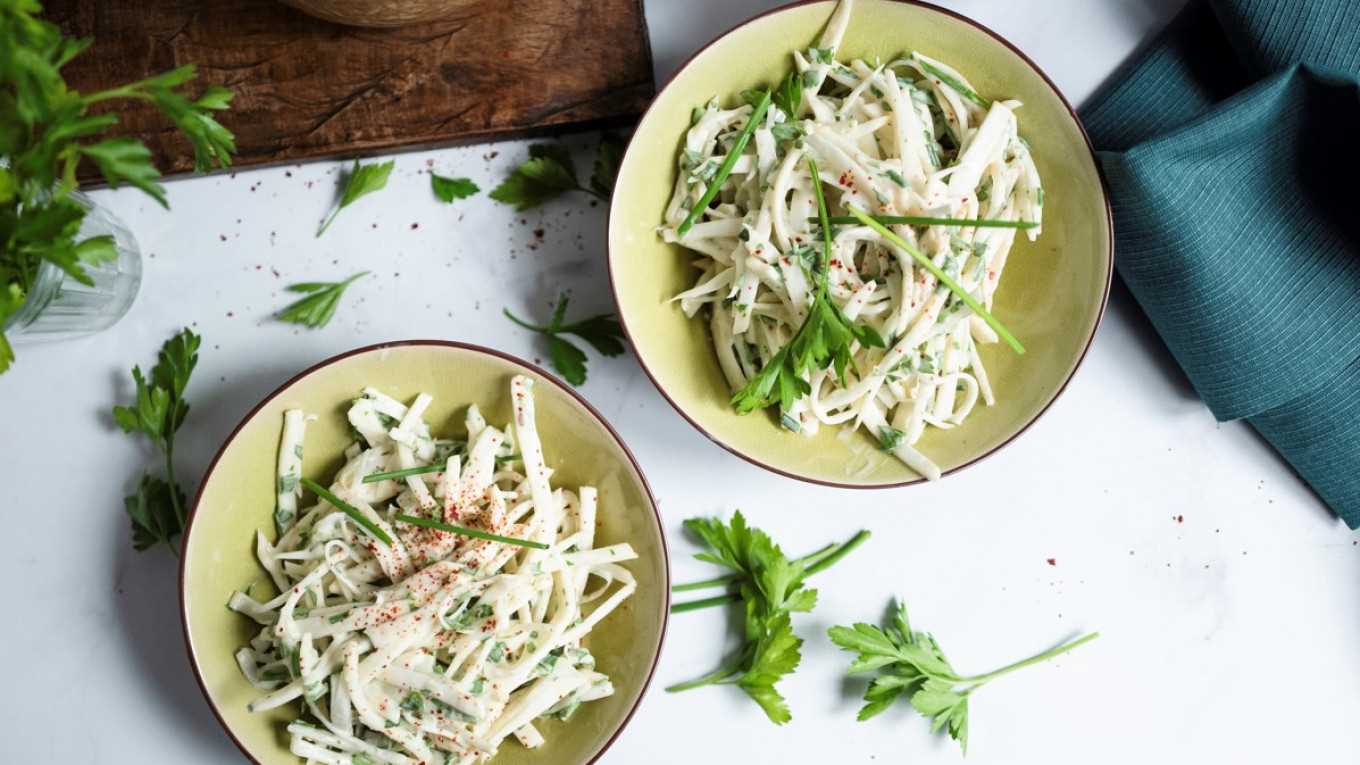
The ideal storage container for celery root is a perforated plastic bag or a container with small air vents. These containers allow air circulation, preventing excess moisture from building up and causing rot. Avoid using sealed plastic bags, as they can trap moisture and accelerate spoilage.
5. Temperature and Humidity
Celery root is best stored at a temperature of around 32-40°F (0-4°C) and a humidity level of 90-95%. To maintain these conditions, store the celery root in the crisper drawer of your refrigerator. Be sure to adjust the humidity settings on your refrigerator, if possible, to create the optimal environment.
6. Checking and Rotating
Regularly check your stored celery root for any signs of decay or spoilage. If you notice any soft spots, mold, or a foul smell, discard the affected roots immediately to prevent the spread of bacteria. Additionally, rotate the celery root occasionally to ensure even air circulation and prevent any areas from becoming damp or overcrowded.
7. Storage Duration
Celery root can typically be stored for 1-2 months when properly stored at the recommended temperature and humidity. However, it’s best to consume it as soon as possible for the freshest flavor and texture.
By following these tips for storing celery root, you can ensure its freshness and enjoy its unique flavor and texture in your dishes for an extended period.
Enhancing Flavor with Seasonal Varieties of Celery Root
Exploring the rich world of seasonal varieties can elevate your dishes to a whole new level when working with celery root. The subtle differences in flavor and texture between different seasons can make a significant impact on your culinary creations. Let’s delve into some of the most popular seasonal varieties of celery root and how you can enhance their flavor.
Winter Celery Root
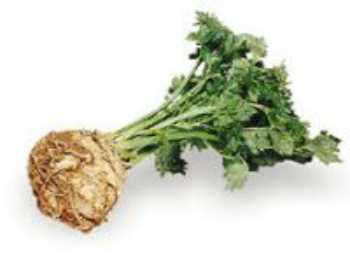
Winter celery root is known for its earthy and intense flavor. It has a crisp texture and a slightly sweet taste. Its robust flavor makes it perfect for hearty winter dishes such as soups, stews, and roasted vegetables. To enhance the flavors of winter celery root, consider pairing it with warm spices like nutmeg, cloves, and cinnamon.
Spring Celery Root
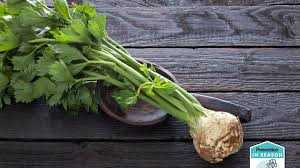
Spring celery root offers a more delicate and milder flavor compared to its winter counterpart. It has a tender texture and a fresh, herbaceous taste. This variety is ideal for lighter dishes such as salads, stir-fries, and gratins. To enhance the flavors of spring celery root, consider pairing it with fresh herbs like parsley, chives, and tarragon.
Summer Celery Root
Summer celery root exhibits a crisp and refreshing flavor. It has a slightly tangy taste and a crunchy texture. This variety works well in salads, slaws, and as a raw veggie dip. To enhance the flavors of summer celery root, consider pairing it with citrus fruits like lemon or lime, and drizzle with a light vinaigrette.
Fall Celery Root
Fall celery root offers a well-rounded and balanced flavor. It has a creamy texture and a subtle sweetness. This variety is versatile and can be used in a wide range of dishes, from purees and mashes to gratins and roasts. To enhance the flavors of fall celery root, consider pairing it with warm spices like cumin, paprika, and thyme.
By experimenting with different seasonal varieties of celery root, you can take your culinary skills to new heights. The subtle nuances in flavor and texture will add depth and complexity to your dishes. Whether you’re cooking a hearty winter stew or a refreshing summer salad, make sure to choose the right seasonal variety of celery root to enhance the overall experience.
Unveiling the Nutritional Benefits of Celery Root
Celery root, also known as celeriac, is a versatile and nutrient-rich vegetable that offers numerous health benefits. It is low in calories and packed with essential vitamins, minerals, and antioxidants.
1. Rich in Fiber
Celery root is an excellent source of dietary fiber, which can promote healthy digestion and prevent constipation. Consuming an adequate amount of fiber can also help manage weight and reduce the risk of developing chronic conditions like heart disease and diabetes.
2. High in Vitamin C
Vitamin C is an important antioxidant that helps boost the immune system and protects against harmful free radicals. Celery root is a great natural source of vitamin C, which can support the body’s immune response and enhance collagen production for healthy skin.
3. Potassium-Rich
Celery root is also loaded with potassium, an essential mineral that helps regulate blood pressure and maintain proper muscle and nerve function. By including celery root in your diet, you can support cardiovascular health and reduce the risk of stroke and heart disease.
4. Contains Phosphorus
Phosphorus is crucial for healthy bones and teeth, as well as for energy production in cells. Celery root provides a good amount of phosphorus, making it a beneficial addition to a balanced diet for promoting strong bone density and facilitating optimal cellular function.
5. Good Source of Vitamin K and B Vitamins
Vitamin K helps in blood clotting and maintaining bone health, while B vitamins are essential for energy production and overall well-being. Celery root contains a significant amount of both vitamin K and various B vitamins, such as folate and vitamin B6, making it a nutritious choice for supporting these vital bodily functions.
6. Supports Hydration
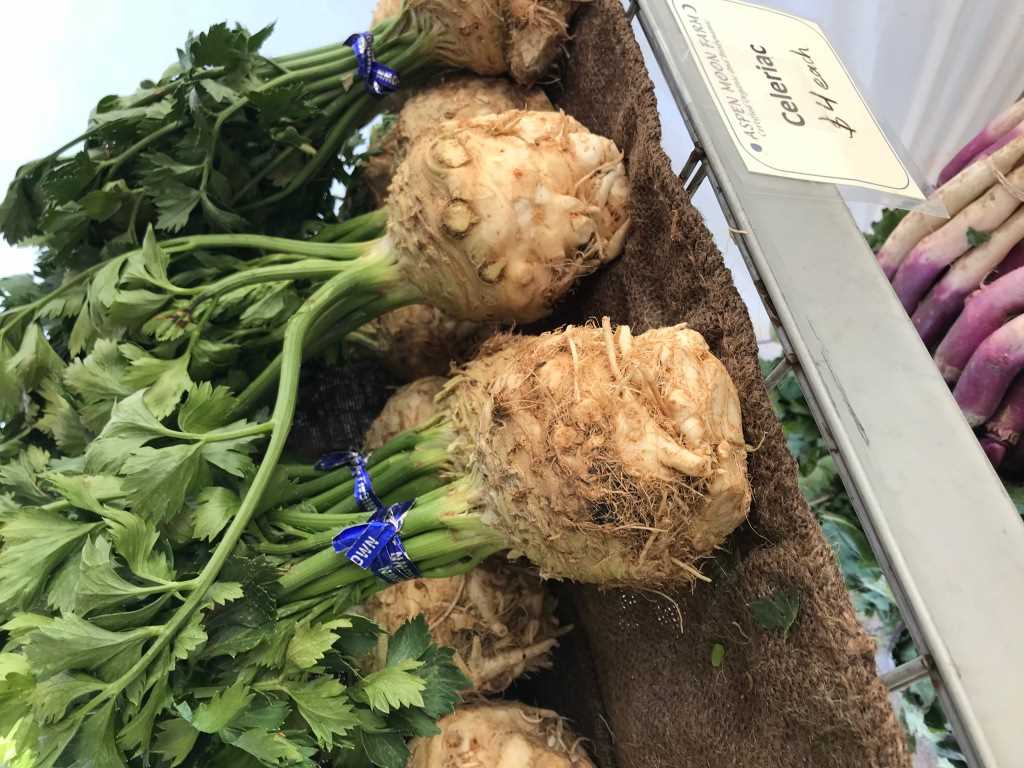
With a high water content, celery root can contribute to your daily hydration needs. Staying hydrated is essential for digestion, metabolism, regulating body temperature, and overall health and well-being.
7. Antioxidant Properties
The antioxidants present in celery root, such as vitamin C and flavonoids, help reduce inflammation in the body and protect against chronic diseases, including certain types of cancer. Including celery root in your diet can provide you with a natural antioxidant boost.
| Nutrient | Amount |
|---|---|
| Calories | 42 |
| Carbohydrates | 9g |
| Fiber | 2g |
| Protein | 1g |
| Fat | 0g |
| Vitamin C | 8mg |
| Potassium | 300mg |
| Phosphorus | 62mg |
| Vitamin K | 41.7μg |
| Folate | 8μg |
| Vitamin B6 | 0.1mg |
Culinary Uses and Recipes Featuring Celery Root
1. Mashed Celery Root
Celery root makes a delicious and healthy alternative to traditional mashed potatoes. To make mashed celery root, peel and dice the celery root, then boil until tender. Drain and mash the celery root with butter, salt, and pepper. For added flavor, you can also mix in garlic or herbs. Serve as a side dish or a base for other vegetables.
2. Roasted Celery Root Soup
Roasted celery root soup is a comforting and flavorful dish. Start by roasting diced celery root with olive oil, salt, and pepper until golden brown. In a separate pot, sauté onions and garlic until soft, then add roasted celery root, vegetable broth, and your choice of herbs or spices. Simmer until the flavors meld together, then blend until smooth.
3. Celery Root Remoulade
Celery root remoulade is a classic French dish that combines the crispness of celery root with a tangy, creamy dressing. Julienne or grate the celery root, then combine with a dressing made from mayonnaise, Dijon mustard, lemon juice, and herbs like parsley or chives. Serve as a refreshing salad or as a side for grilled meats or seafood.
4. Celery Root and Apple Slaw
A refreshing and crunchy salad, celery root and apple slaw is a perfect side dish for picnics or barbecues. Julienne or grate celery root and combine it with thinly sliced apples. Toss with a dressing made from apple cider vinegar, olive oil, honey, and mustard. Season with salt and pepper, and garnish with chopped parsley or walnuts.
5. Celery Root Fries
If you’re looking for a healthier alternative to traditional French fries, try making celery root fries. Cut celery root into thin matchstick-sized pieces, then toss with olive oil, salt, and your choice of seasonings, such as paprika or garlic powder. Roast in the oven until golden brown and crispy. Serve as a delicious and nutritious snack or side dish.
6. Celery Root and Potato Gratin
A comforting and rich dish, celery root and potato gratin is perfect for colder months. Thinly slice celery root and potatoes, then layer them in a baking dish with a mixture of cream or milk, garlic, and cheese. Bake until the vegetables are tender and the top is golden and bubbly. Serve as a side dish or a main course with a green salad.
7. Celery Root and Mushroom Risotto
Celery root adds a unique flavor and texture to mushroom risotto. Sauté diced celery root and mushrooms in butter or olive oil until tender, then add Arborio rice and cook until lightly toasted. Slowly add vegetable or chicken broth, stirring frequently, until the rice is creamy and al dente. Finish with grated Parmesan cheese and fresh herbs like thyme or parsley.
| Method | Description |
|---|---|
| Raw | Celery root can be grated or julienned and enjoyed raw in salads or slaws. |
| Steamed | Steamed celery root can be served as a simple side dish or used as an ingredient in more complex recipes. |
| Boiled | Boiling celery root in water or broth until tender makes it a versatile ingredient for mashing, soups, and stews. |
| Roasted | Roasting celery root brings out its natural sweetness and adds a depth of flavor to various dishes. |
When it comes to culinary uses, celery root is incredibly versatile. Whether you’re looking for a side dish, a soup, or a main course, celery root can add a unique taste and texture to your recipes. Experiment with these culinary uses and discover the endless possibilities of this underappreciated ingredient!
“Question-Answer”
What is celery root?
Celery root, also known as celeriac, is a root vegetable that is part of the celery family. It has a knobby, brown exterior and a creamy white interior.
How do you pick the best celery root?
When picking celery root, look for ones that are firm and heavy for their size. Avoid any roots that have soft spots or feel spongy.
Can celery root be eaten raw?
Yes, celery root can be eaten raw. It has a crisp texture and a subtle flavor that is similar to celery.
What are some ways to cook celery root?
Celery root can be cooked in a variety of ways. It can be boiled and mashed, roasted with other vegetables, or used in soups and stews.
What are the health benefits of celery root?
Celery root is low in calories and a good source of fiber. It also contains vitamins C and K, as well as minerals like phosphorus and potassium.
Is celery root the same as celery?
No, celery root is not the same as celery. While they are related, celery root is the root of the celery plant, while the stalks of celery are typically eaten.







